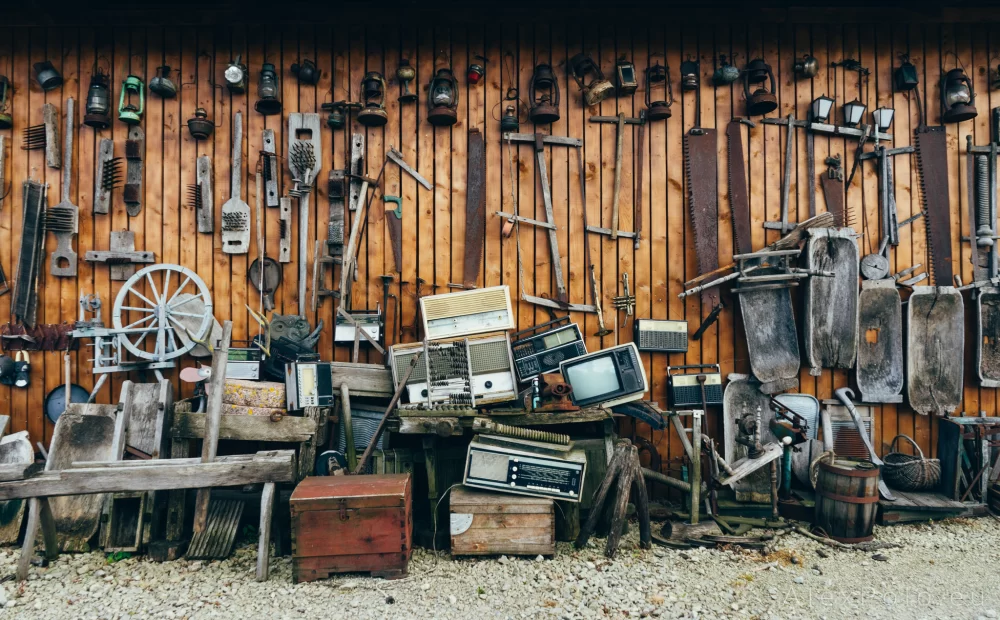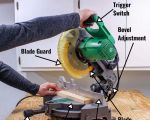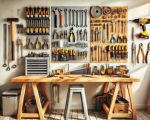How to Safely Use a Ladder for Home Repairs: A Complete Guide
- 1. The Importance of Ladder Safety
- 2. Choosing the Right Ladder for Home Repairs
- 3. Preparing Your Ladder for Safe Use
- 4. How to Use a Ladder Safely
- 5. Common Mistakes to Avoid When Using a Ladder
- 6. Ladder Maintenance and Care
- 7. Why You Should Invest in Quality Ladders
1. The Importance of Ladder Safety
Using a ladder is a common part of many home repairs, from fixing a leaky roof to painting high walls. However, ladder-related injuries are unfortunately very common. According to the Consumer Product Safety Commission (CPSC), thousands of people are injured every year due to improper ladder use. This makes ladder safety a critical consideration for any home improvement project. Understanding how to safely use a ladder can not only prevent injuries but also ensure that your home repairs are completed efficiently and without unnecessary risks.
Whether you're using a step ladder for small repairs or an extension ladder for taller tasks, following the right safety protocols can prevent accidents and make your DIY projects much safer. In this guide, we'll explore the essential ladder safety tips, helping you feel confident and secure when performing home repairs with a ladder.
2. Choosing the Right Ladder for Home Repairs
The first step in ensuring safety while using a ladder is choosing the right one for the job. Different types of ladders are designed for specific tasks, and using the wrong type can increase the risk of accidents. Below are the most common types of ladders used in home repairs and their best uses:
2.1 Step Ladders
Step ladders are self-supporting and are ideal for shorter tasks such as changing light bulbs, cleaning windows, or reaching high shelves. These ladders have a platform at the top, making them a stable choice for jobs that don’t require reaching extreme heights. Step ladders are perfect for indoor tasks where stability and ease of use are essential.
2.2 Extension Ladders
Extension ladders are great for reaching higher areas, such as rooftops or second-story windows. These ladders consist of two parts that can extend and retract, allowing for a customizable height. When using an extension ladder, it's important to ensure that it is placed at the correct angle and is positioned securely against a solid surface.
2.3 Multi-Purpose Ladders
Multi-purpose ladders are versatile options that can be converted into step ladders, extension ladders, or scaffolding. These ladders are excellent for people who need a variety of ladder configurations for different tasks around the house.
3. Preparing Your Ladder for Safe Use
Before using a ladder, it’s essential to inspect it for any signs of wear and tear. A faulty ladder is a major safety hazard, so always perform a pre-use inspection. Here are the key steps to prepare your ladder:
3.1 Inspect for Damage
Check the ladder for any cracks, bends, or broken rungs. If the ladder is made of wood, ensure that there are no splinters or signs of rot. For metal ladders, look for rust, and for fiberglass ladders, check for any cracks in the material. If you find any damage, replace the ladder immediately.
3.2 Ensure Proper Stability
Make sure that the ground where the ladder will be placed is level and firm. Avoid placing it on uneven ground, as this can cause the ladder to tip over. If you're using an extension ladder, ensure it is positioned at the proper angle (approximately 75 degrees) and is securely placed against a stable surface.
3.3 Clean the Ladder
Before use, make sure the ladder is clean and free of debris, which can cause slips and falls. Clean the rungs and check that the feet are in good condition to ensure proper grip.
4. How to Use a Ladder Safely
Using a ladder safely requires paying attention to both technique and environment. Here are the fundamental safety tips to follow when using a ladder for home repairs:
4.1 Maintain Three Points of Contact
Always maintain three points of contact with the ladder—two hands and one foot, or two feet and one hand. This keeps you stable while climbing or descending and minimizes the chance of slipping.
4.2 Avoid Overreaching
When on a ladder, always position yourself so that you can comfortably reach the task without overextending your body. Overreaching can cause you to lose your balance and fall. Move the ladder instead of leaning too far to the side.
4.3 Keep Tools and Materials Secure
If you're carrying tools or materials up a ladder, use a tool belt or place them in a container that is securely fastened to the ladder. Never carry heavy items while climbing the ladder, as this can affect your balance and increase the risk of falling.
5. Common Mistakes to Avoid When Using a Ladder
There are several common mistakes that can lead to accidents when using a ladder. Here are some of the most important ones to avoid:
5.1 Not Securing the Ladder
Failing to secure your ladder, especially when using an extension ladder, is one of the most common causes of accidents. Always ensure that your ladder is on stable ground and, if possible, secured at the top to prevent it from slipping.
5.2 Using a Damaged Ladder
Using a ladder that is damaged or old can put your safety at serious risk. Always inspect your ladder before use and never compromise on safety. If a ladder appears worn out, replace it immediately.
5.3 Climbing with Wet Hands or Feet
Wet hands or feet can make a ladder slippery and increase the chance of slipping. Ensure that your hands and feet are dry before climbing the ladder, and avoid using the ladder in rainy conditions if possible.
6. Ladder Maintenance and Care
Maintaining your ladder is crucial to ensure its longevity and safety. Regular maintenance includes cleaning it after use, inspecting it for any damage, and storing it properly. Ladders should be stored in a dry place, away from direct sunlight or extreme temperatures, which can cause deterioration. Proper care will help prevent accidents and extend the life of your ladder.
7. Why You Should Invest in Quality Ladders
Investing in a high-quality ladder is essential for ensuring safety and efficiency during home repairs. A sturdy, reliable ladder will not only make your tasks easier but will also minimize the risk of accidents. Quality ladders are designed to withstand wear and tear, have better grip, and offer better stability. When shopping for a ladder, look for well-known brands and make sure to select the appropriate type for the tasks you will be performing.
For the best selection of ladders and home repair tools, check out ToolNest, where you'll find a wide range of high-quality products tailored to your needs.









